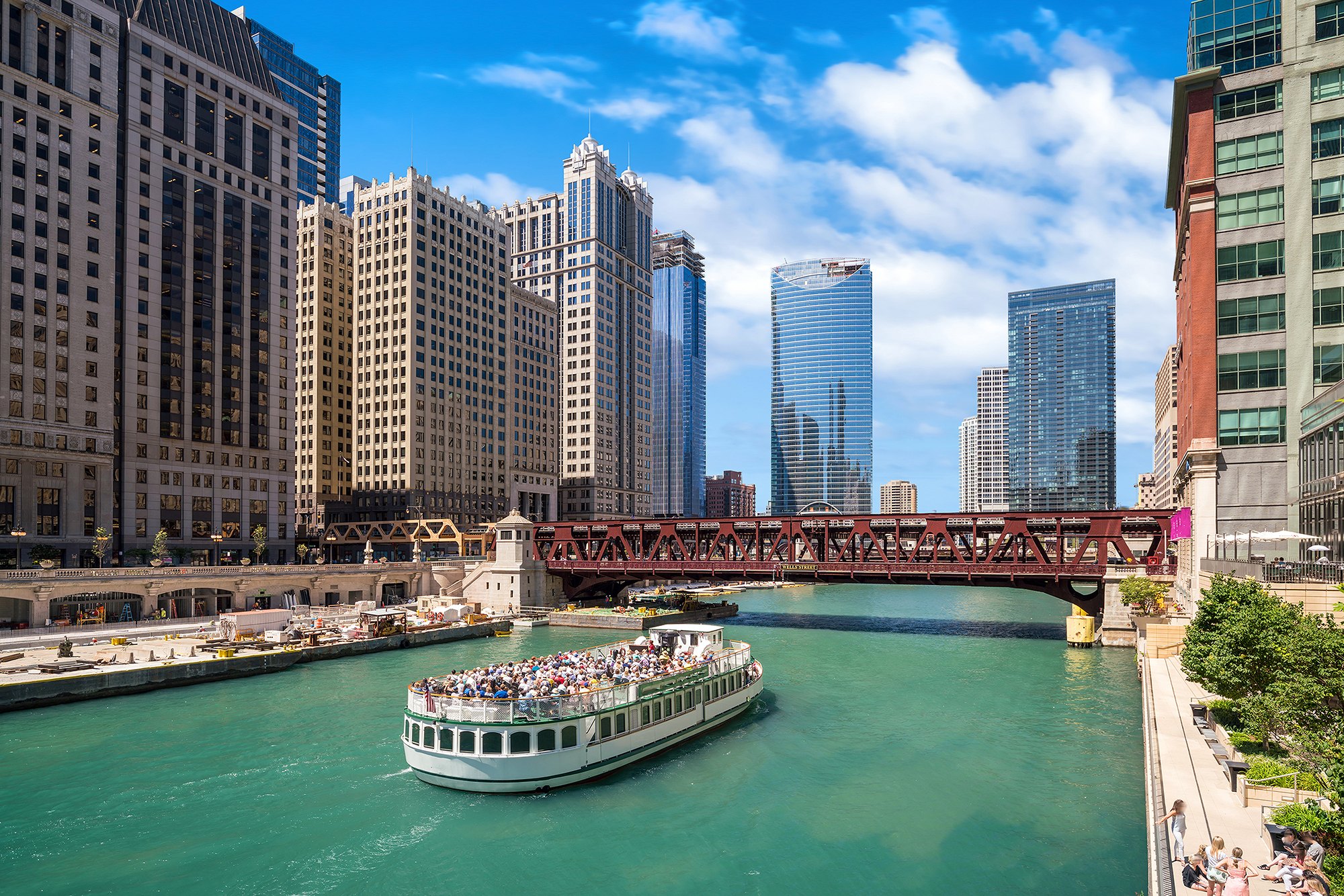Chicago River is a river that flows through Chicago, Illinois, in the upper Midwestern United States. For most of its history, the river flowed eastward into Lake Michigan. Since 1900, however, the river has been famous as the river that flows backward. In that year, engineers reversed the direction of the river to prevent sewage from flowing into the lake and contaminating the city’s water supply.

Long before Chicago developed into a major metropolis, the North and South branches of the Chicago River flowed through marshlands before meeting at Wolf Point in what is now the city’s downtown area. The Main Stem of the river then headed eastward into Lake Michigan.
In 1848, workers completed the 96-mile (154-kilometer) Illinois and Michigan Canal from the South Branch of the Chicago River to the Illinois River. The Illinois flows west to the Mississippi River, and the shallow canal made Chicago the hub for the only river transportation route from the Great Lakes to the Mississippi.
As the city grew rapidly during the late 1800’s, the Chicago River became the center of the region’s lumber and meatpacking industries. Sewage and industrial waste flowed directly into the river, raising public health fears. Pollutants then spread into the lake, approaching the tunnels that had been built offshore to supply drinking water to the city.
In 1889, the Illinois General Assembly authorized the formation of the Sanitary District of Chicago (now the Metropolitan Water Reclamation District of Greater Chicago) to remedy the city’s water pollution problems. In 1900, workers completed the 28-mile (45-kilometer) Chicago Sanitary and Ship Canal. This larger canal linked the Chicago River to the Des Plaines River, which in turn flows into the Illinois. A system of locks, including one at Lake Michigan, then directed the flow of the Chicago River westward, into the canal. Other projects of the early 1900’s further transformed the Chicago area waterway system. The outdated Illinois and Michigan Canal officially closed in 1933.
In the late 1900’s, the city began a series of projects to improve the river’s water quality and the appearance of its banks. Such efforts attracted wildlife, recreational boaters, and commercial development. Every March, crowds gather at the river when the city dyes its waters green for St. Patrick’s Day. St. Patrick’s day honors Saint Patrick, the patron saint of Ireland. Chicago has a large number of people of Irish descent.
